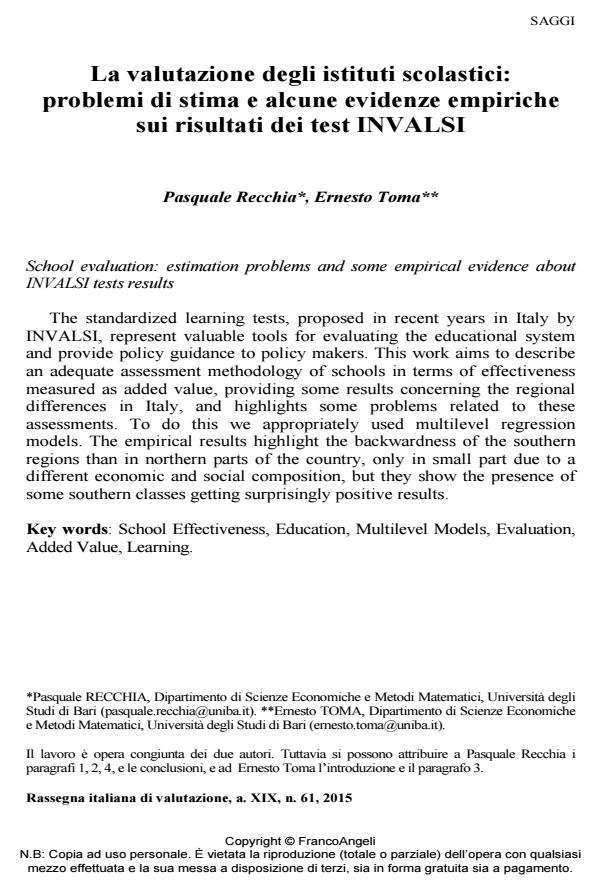La valutazione degli istituti scolastici: problemi di stima e alcune evidenze empiriche sui risultati dei test INVALSI
Titolo Rivista RIV Rassegna Italiana di Valutazione
Autori/Curatori Pasquale Recchia, Ernesto Toma
Anno di pubblicazione 2016 Fascicolo 2015/61
Lingua Italiano Numero pagine 21 P. 49-69 Dimensione file 129 KB
DOI 10.3280/RIV2015-061004
Il DOI è il codice a barre della proprietà intellettuale: per saperne di più
clicca qui
Qui sotto puoi vedere in anteprima la prima pagina di questo articolo.
Se questo articolo ti interessa, lo puoi acquistare (e scaricare in formato pdf) seguendo le facili indicazioni per acquistare il download credit. Acquista Download Credits per scaricare questo Articolo in formato PDF

FrancoAngeli è membro della Publishers International Linking Association, Inc (PILA)associazione indipendente e non profit per facilitare (attraverso i servizi tecnologici implementati da CrossRef.org) l’accesso degli studiosi ai contenuti digitali nelle pubblicazioni professionali e scientifiche
The standardized learning tests, proposed in recent years in Italy by INVALSI, represent valuable tools for evaluating the educational system and provide policy guidance to policy makers. This work aims to describe an adequate assessment methodology of schools in terms of effectiveness measured as added value, providing some results concerning the regional differences in Italy, and highlights some problems related to these assessments. To do this we appropriately used multilevel regression models. The empirical results highlight the backwardness of the southern regions than in northern parts of the country, only in small part due to a different economic and social composition, but they show the presence of some southern classes getting surprisingly positive results.
Parole chiave: School Effectiveness, Education, Multilevel Models, Evaluation, Added Value, Learning.
Pasquale Recchia, Ernesto Toma, La valutazione degli istituti scolastici: problemi di stima e alcune evidenze empiriche sui risultati dei test INVALSI in "RIV Rassegna Italiana di Valutazione" 61/2015, pp 49-69, DOI: 10.3280/RIV2015-061004